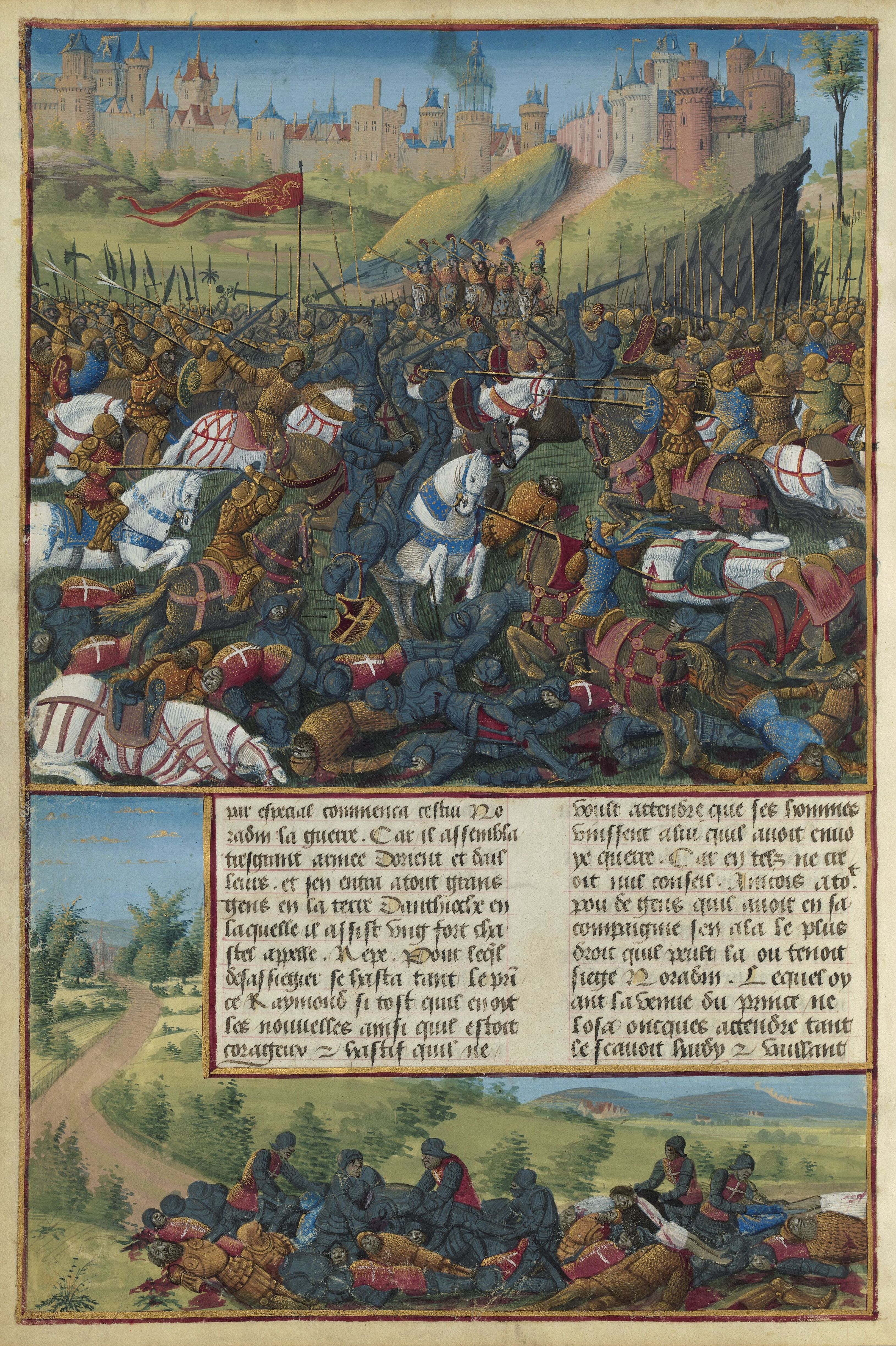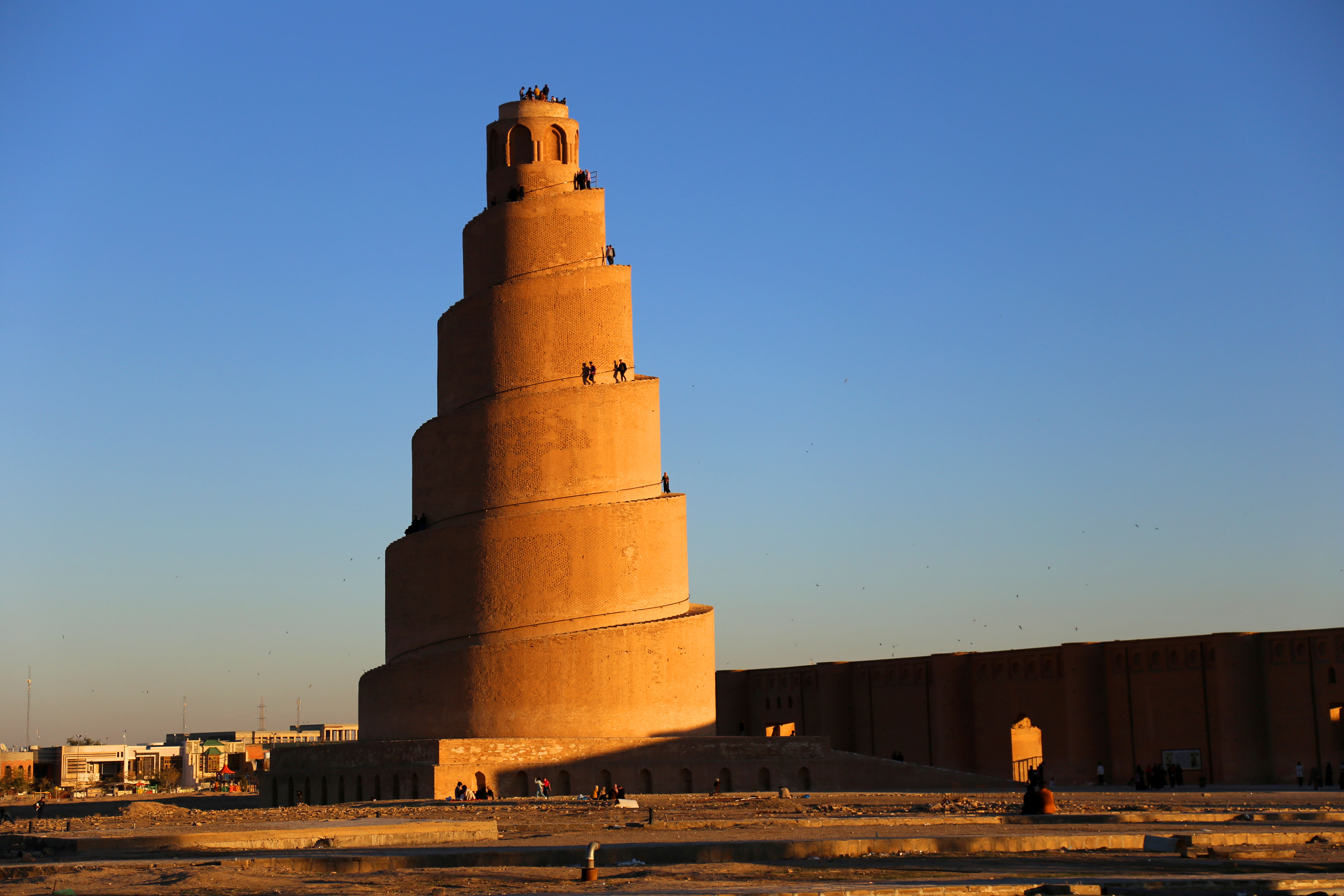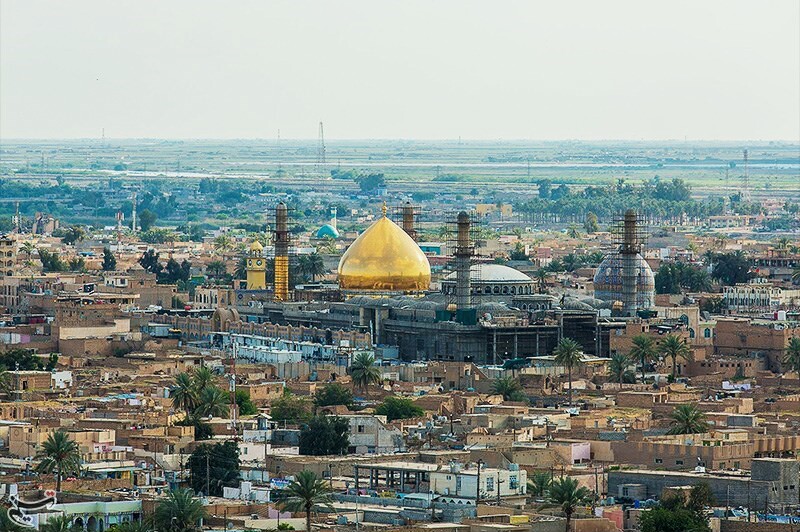|
Saladin Province
The Saladin, Salah ad Din, or Salah Al-Din Governorate (, ) is one of Iraq's 19 governorates, north of Baghdad. It has an area of , with an estimated population of 1,042,200 people in 2003. It is made up of 8 districts, with the capital being Tikrit. Before 1976 the governorate was part of Baghdad Governorate. The governorate is named after the Kurdish Muslim leader Saladin or Salah ad Din, who hailed from the governorate. This governorate is largely Sunni and is also where Saddam Hussein, former president of Iraq, was born, in the village of Al-Awja. Salah Al-Din governorate, a traditional stronghold of Saddam and his Al-Bu Nasir tribe that is located in the heart of the Sunni Triangle, has been a centre of insurgencies, tribal rivalries, and political and sectarian violence since the 2003 U.S.-led Coalition invasion of Iraq. History Saladin Governorate contains a number of important religious and cultural sites. Samarra, the governorate's largest city, is home to both the Al ... [...More Info...] [...Related Items...] OR: [Wikipedia] [Google] [Baidu] |
Governorates Of Iraq
Iraq consists of 19 governorates (; ), also known as "provinces". Per the Iraqi constitution, governorates can form a Federal regions of Iraq, federal region. Four governorates, Erbil, Sulaymaniyah, Halabja and Duhok, constitute the semi-autonomous Kurdistan Region. Baghdad Governorate, Baghdad (which is the most populous) and Basra Governorate, Basra are the oldest governorates. The second most-populous one, Nineveh Governorate, Ninawa (or Nineveh) is in the upland region and has a cooler climate of the north-west. There have been numerous calls to recognize Halabja Governorate since 1999. It was recognized as an official governorate of the Kurdistan Region in 2014, and the Council of Ministers (Iraq), Council of Ministers approved a bill twice in 2013, and 2023. The Council of Representatives of Iraq officially approved Halabja as Iraq's 19th governorate on 14 April 2025. On 27 April 2025, Baghdad Today reported of an ongoing government initiative to convert Tel Afar District ... [...More Info...] [...Related Items...] OR: [Wikipedia] [Google] [Baidu] |
Al-Bu Nasir (Iraqi Tribe)
Al-Bu Nasir () is one of the Arab tribes of Iraq. Al-Bu Nasir is a Sayyid tribe of around 35,000 people who primarily inhabit the town of Tikrit and the surrounding area of northern central Iraq, as well as many other areas in south and central Iraq. The progenitor of the Al-Bu Nasir tribe was Ahmed ibn Hussein ibn Ibrahim ibn Mahmoud (ناصر بن حسين بن إبراهيم بن محمود), who was a descendant of Ahmad Al-Rifa'i, hence an affiliation of the tribe being 'Al-Rifa'i.' Ahmad Al-Rifa'i was a Husseini Sayyid, being descended from Ibrahim ibn Musa Al-Kadhim. History Although not very numerous, the Al-Bu Nasir nonetheless obtained a reputation of being "a difficult lot of people, cunning and secretive, whose poverty drove most of them to pervert the Bedouins' legendary qualities of being warlike and fearless." Like many Iraqi tribes, it follows the Hanafi fiqh and it traced its origins to the Arabian Peninsula, they maintained cordial ties with other related clan ... [...More Info...] [...Related Items...] OR: [Wikipedia] [Google] [Baidu] |
World Heritage Site
World Heritage Sites are landmarks and areas with legal protection under an treaty, international treaty administered by UNESCO for having cultural, historical, or scientific significance. The sites are judged to contain "cultural and natural heritage around the world considered to be of outstanding value to humanity". To be selected, a World Heritage Site is nominated by its host country and determined by the UNESCO's World Heritage Committee to be a unique landmark which is geographically and historically identifiable, having a special cultural or physical significance, and to be under a sufficient system of legal protection. World Heritage Sites might be ancient ruins or historical structures, buildings, cities, deserts, forests, islands, lakes, monuments, mountains or wilderness areas, and others. A World Heritage Site may signify a remarkable accomplishment of humankind and serve as evidence of humanity's intellectual history on the planet, or it might be a place of grea ... [...More Info...] [...Related Items...] OR: [Wikipedia] [Google] [Baidu] |
UNESCO
The United Nations Educational, Scientific and Cultural Organization (UNESCO ) is a List of specialized agencies of the United Nations, specialized agency of the United Nations (UN) with the aim of promoting world peace and International security, security through international cooperation in education, arts, sciences and culture. It has 194 Member states of UNESCO, member states and 12 associate members, as well as partners in the Non-governmental organization, non-governmental, Intergovernmental organization, intergovernmental and private sector. Headquartered in Paris, France, UNESCO has 53 regional field offices and 199 National Commissions for UNESCO, national commissions. UNESCO was founded in 1945 as the successor to the League of Nations' International Committee on Intellectual Cooperation.English summary). UNESCO's founding mission, which was shaped by the events of World War II, is to advance peace, sustainable development and human rights by facilitating collaboratio ... [...More Info...] [...Related Items...] OR: [Wikipedia] [Google] [Baidu] |
Abbasid Samarra
Samarra is a city in central Iraq, which served as the capital of the Abbasid Caliphate from 836 to 892. Founded by the caliph al-Mu'tasim, Samarra was briefly a major metropolis that stretched dozens of kilometers along the east bank of the Tigris, but was largely abandoned in the latter half of the 9th century, especially following the return of the caliphs to Baghdad. Due to the relatively short period of occupation, extensive ruins of Abbasid Samarra have survived into modern times. The layout of the city can still be seen via aerial photography, revealing a vast network of Urban planning, planned streets, houses, palaces and mosques. Studies comparing the archeological evidence with information provided by List of Muslim historians, Muslim historians have resulted in the identification of many of the toponyms within the former city. The archeological site of Samarra was named by UNESCO as a World Heritage Site in 2007, calling it "the best-preserved plan of an ancient large ... [...More Info...] [...Related Items...] OR: [Wikipedia] [Google] [Baidu] |
Abbasid Caliphate
The Abbasid Caliphate or Abbasid Empire (; ) was the third caliphate to succeed the Islamic prophet Muhammad. It was founded by a dynasty descended from Muhammad's uncle, Abbas ibn Abd al-Muttalib (566–653 CE), from whom the dynasty takes its name. After overthrowing the Umayyad Caliphate in the Abbasid Revolution of 750 CE (132 AH), they ruled as caliphs based in modern-day Iraq, with Baghdad being their capital for most of their history. The Abbasid Revolution had its origins and first successes in the easterly region of Khurasan, far from the Levantine center of Umayyad influence. The Abbasid Caliphate first centered its government in Kufa, modern-day Iraq, but in 762 the caliph al-Mansur founded the city of Baghdad as the new capital. Baghdad became the center of science, culture, arts, and invention in what became known as the Golden Age of Islam. By housing several key academic institutions, including the House of Wisdom, as well as a multiethnic and multi- ... [...More Info...] [...Related Items...] OR: [Wikipedia] [Google] [Baidu] |
Zengid
The Zengid or Zangid dynasty, also referred to as the Atabegate of Mosul, Aleppo and Damascus (Arabic: أتابكة الموصل وحلب ودمشق), or the Zengid State (Old Anatolian Turkish: , Modern Turkish: ; ) was initially an '' Atabegate'' of the Seljuk Empire created in 1127. It formed a Turkoman dynasty of Sunni Muslim faith, which ruled parts of the Levant and Upper Mesopotamia, and eventually seized control of Egypt in 1169. In 1174, the Zengid state extended from Tripoli to Hamadan and from Yemen to Sivas. Imad ad-Din Zengi was the first ruler of the dynasty. The Zengid ''Atabegate'' became famous in the Islamic world for its successes against the Crusaders, and for being the ''Atabegate'' from which Saladin originated. Following the demise of the Seljuk dynasty in 1194, the Zengids persisted for several decades as one of the "Seljuk successor-states" until 1250. History In 1127, following the murder of Aqsunqur al-Bursuqi, ''atabeg'' of Mosul, the Seljuk Empire ... [...More Info...] [...Related Items...] OR: [Wikipedia] [Google] [Baidu] |
Great Mosque Of Samarra
The Great Mosque of Samarra is a mosque from the 9th century CE located in Samarra, Iraq. The mosque was commissioned in 848 and completed in 851 by the Abbasid caliph Al-Mutawakkil who reigned (in Samarra) from 847 until 861. At the time of construction, it was the world's largest mosque. It is known for its high minaret encircled by a spiral ramp. The mosque is located within the Samarra Archaeological City UNESCO World Heritage Site, listed in 2007. History For a time, the mosque was the largest in the world; its minaret, the Malwiya Tower, is a spiralling cone high and wide with a spiral ramp. The reign of Al-Mutawakkil had a great effect on the appearance of the city, for he seemed to have been a lover of architecture, and the one responsible for building the Great Mosque of Samarra. Al-Mutawakkil and his hired workers as well as other people from the area constructed this mosque using baked brick octagon piers that included four marble columns in the corners. The ma ... [...More Info...] [...Related Items...] OR: [Wikipedia] [Google] [Baidu] |
Imamah (Shia Doctrine)
In Shia Islam, the Imamah () is a doctrine which asserts that certain individuals from the lineage of the Islamic prophet Muhammad are to be accepted as leaders and guides of the ummah after the death of Muhammad. Imamah further says that Imams possess divine knowledge and authority (Ismah) as well as being part of the Ahl al-Bayt, the family of Muhammad. These Imams have the role of providing commentary and interpretation of the Quran as well as guidance. Etymology The word "Imām" denotes a person who stands or walks "in front". For Sunni Islam, the word is commonly used to mean a person who leads the course of prayer in the mosque. It also means the head of a ''madhhab'' ("school of thought"). However, from the Shia point of view this is merely the ''basic'' understanding of the word in the Arabic language and, for its proper religious usage, the word "Imam" is applicable ''only'' to those members of the house of Muhammad designated as infallible by the preceding Imam. ... [...More Info...] [...Related Items...] OR: [Wikipedia] [Google] [Baidu] |
Shia Islam
Shia Islam is the second-largest Islamic schools and branches, branch of Islam. It holds that Muhammad in Islam, Muhammad designated Ali ibn Abi Talib () as both his political Succession to Muhammad, successor (caliph) and as the spiritual leader of the Muslim community (Imamah (Shia doctrine), imam). However, his right is understood to have been usurped by a number of Companions of the Prophet, Muhammad's companions at the meeting of Saqifa where they appointed Abu Bakr () as caliph instead. As such, Sunni Muslims believe Abu Bakr, Umar (), Uthman () and Ali to be 'Rashidun, rightly-guided caliphs' whereas Shia Muslims only regard Ali as the legitimate successor. Shia Muslims assert imamate continued through Ali's sons Hasan ibn Ali, Hasan and Husayn ibn Ali, Husayn, after whom different Shia branches have their own imams. They revere the , the family of Muhammad, maintaining that they possess divine knowledge. Shia holy sites include the Imam Ali Shrine, shrine of Ali in Naj ... [...More Info...] [...Related Items...] OR: [Wikipedia] [Google] [Baidu] |
Al-Askari Shrine
Al-Askari Shrine, the Askariyya Shrine, or Al-Askari Mosque is a Shia Muslim mosque and mausoleum in the Iraqi city of Samarra from Baghdad. It is one of the most important Shia shrines in the world. It was built in 944. The dome was destroyed in a bombing by Sunni extremists in February 2006 and its two remaining minarets were destroyed in another bombing in June 2007, causing widespread anger among Shias and instigation of the Iraqi Civil War between the country's Shia and Sunni factions. The remaining clock tower was also destroyed in July 2007. The dome and minarets were repaired and the mosque reopened in April 2009. The 10th and 11th Shī'īte Imams, 'Alī al-Hādī ("''an-Naqī''") and his son Ḥasan al-'Askarī, known as ''al-'Askariyyayn'' ("the two ''Askarī''s"), are buried in the shrine. Housed in the mosque are also the tombs of Ḥakīma Khātūn, sister of 'Alī al-Hādī; and Narjis Khātūn, the mother of Muḥammad al-Mahdī. [...More Info...] [...Related Items...] OR: [Wikipedia] [Google] [Baidu] |
Samarra
Samarra (, ') is a city in Iraq. It stands on the east bank of the Tigris in the Saladin Governorate, north of Baghdad. The modern city of Samarra was founded in 836 by the Abbasid caliph al-Mu'tasim as a new administrative capital and military base. In 2003 the city had an estimated population of 348,700. During the Iraqi Civil War (2006–08), Samarra was in the " Sunni Triangle" of resistance. The archeological site of Samarra still retains much of the historic city's original plan, architecture and artistic relics. In 2007, UNESCO designated it a World Heritage Site. History Prehistoric Samarra The remains of prehistoric Samarra were first excavated between 1911 and 1914 by the German archaeologist Ernst Herzfeld. Samarra became the type site for the Samarra culture. Since 1946, the notebooks, letters, unpublished excavation reports and photographs have been in the Freer Gallery of Art in Washington, D.C. The civilization flourished alongside the Ubaid per ... [...More Info...] [...Related Items...] OR: [Wikipedia] [Google] [Baidu] |






